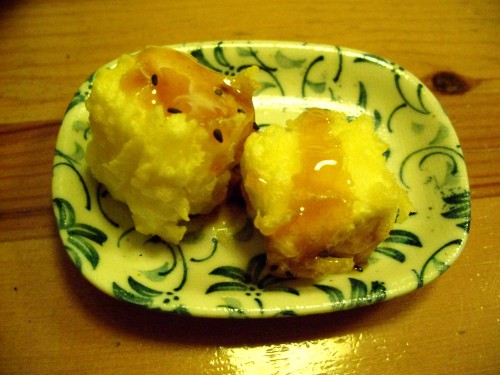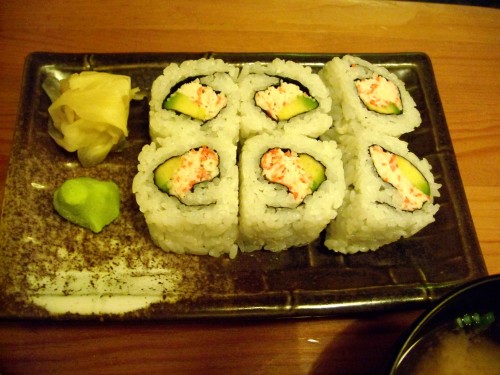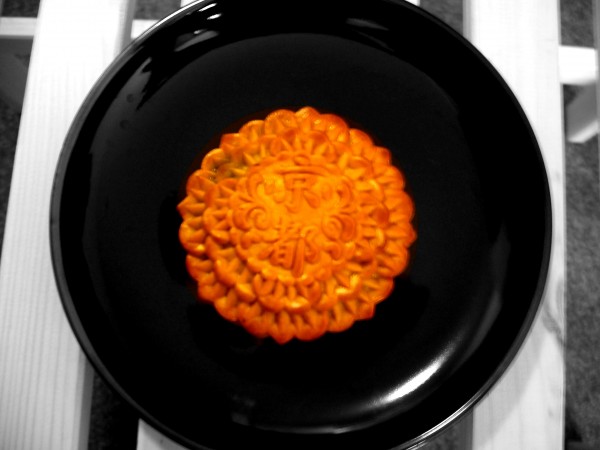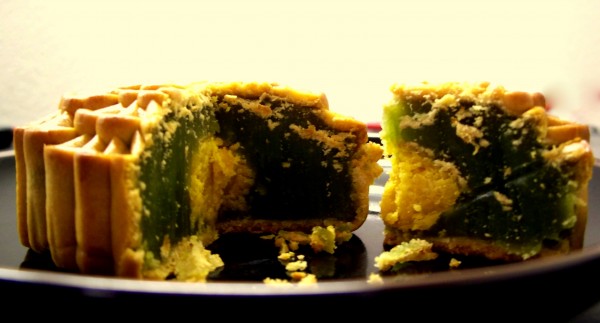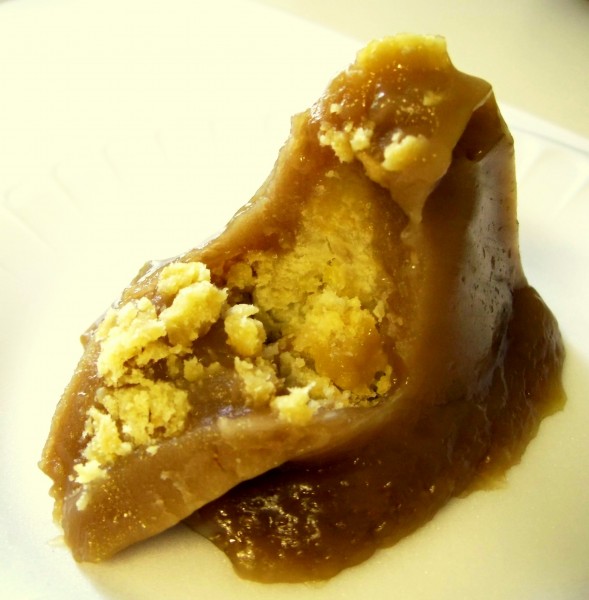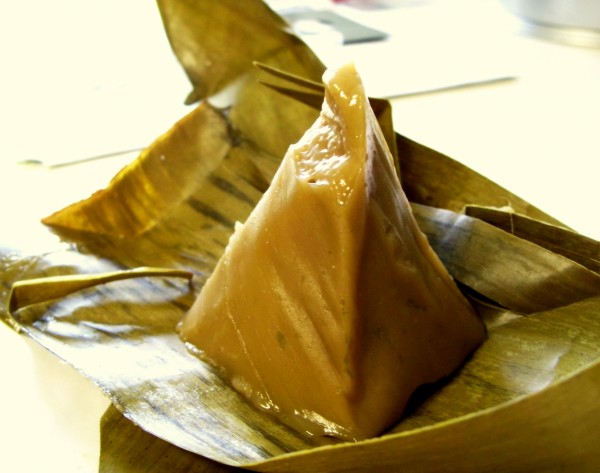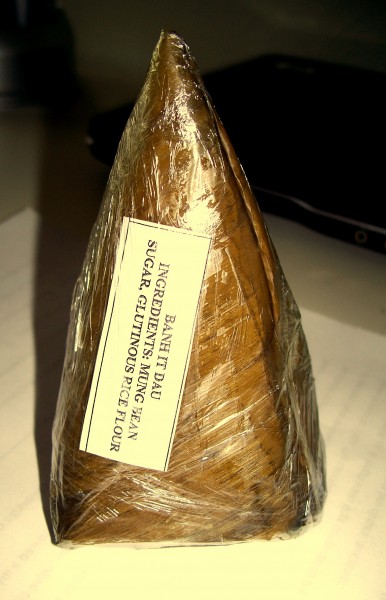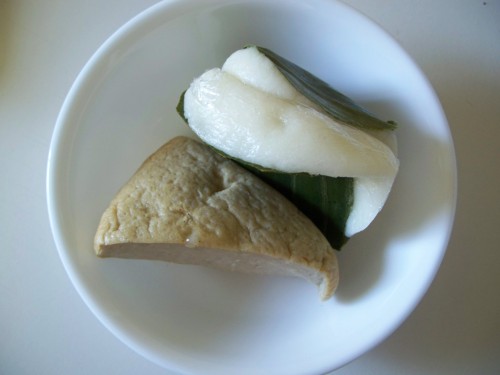
It’s just a white bun made from sticky rice, loosely wrapped in banana leaf so that it doesn’t attach indefinitely to your fingers, ready to sandwich a thick cut of cha lua. The purpose of the bun is purely a textural enjoyment, it has neither taste nor smell. All flavors come from the sausage. Eating the bun alone would be like chewing an incredibly huge piece of gum, the only difference is you can swallow the bun. Come to think of it, we can make a bunch of bite size sticky rice “gum” for American school kids, they can chew until they’re bored, and swallow it, no unfortunate mess under the desks and your shoes. Cool, innit?
Because of either its simplicity or its antiqueness, the bánh dầy is not quite a favorable snack among the young Vietnamese these days. Or perhaps because it is a treat from the North? Southerners have a sweet tooth and are attracted to fatty, rich, flavor-compact concoctions. Bánh dầy is none of that. When I was in Saigon I knew of bánh dầy through three sources: the extremely common tale of bánh chưng bánh dầy, the book “Hanoi 36 streets” by Thạch Lam, and the tiny buns filled with bean paste (bánh dầy đậu) Little Mother got for me from Ngọc Sáng bakery in District 1. Another case of cross cultural similarity: compare the banh day dau with the Japanese daifuku: the sticky rice coat is exactly like mochi, the mung bean filling is salty while daifuku’s filling is sweetened.

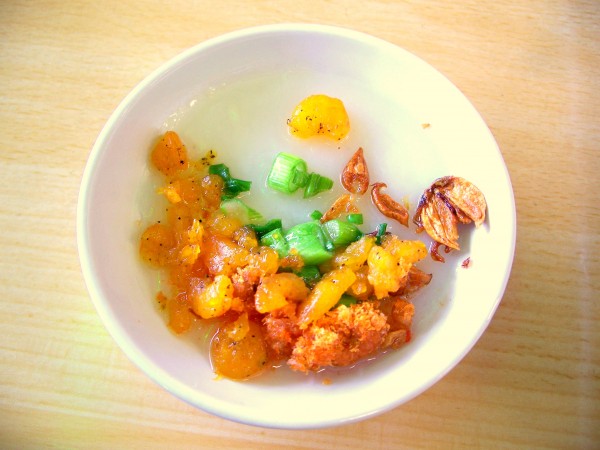
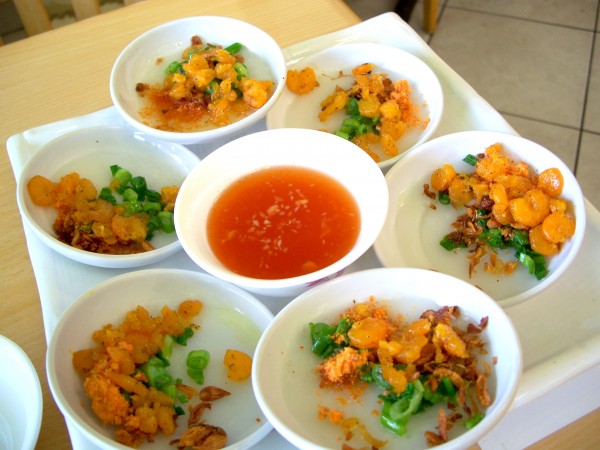
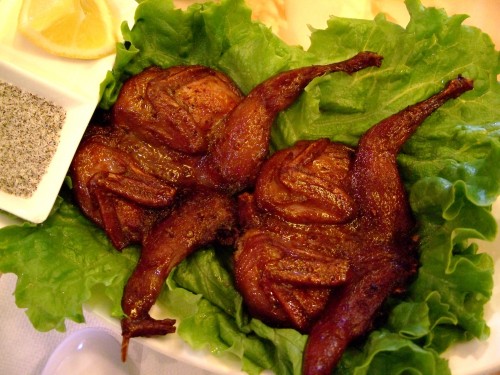
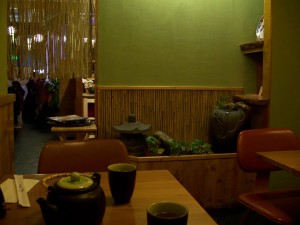 Although we try to be objective, numerous factors always manage to skew our view in one way or another. Surely there are objective facts, like the restaurant is small or the fries are spicy, but generally the taste can be affected by the conversation of a nearby dining couple, the window seats looking out to a blazing sun, an unusual day at work, or sometimes just the unwillingness to compliment. The mood makes the food. My mood wasn’t particularly bad
Although we try to be objective, numerous factors always manage to skew our view in one way or another. Surely there are objective facts, like the restaurant is small or the fries are spicy, but generally the taste can be affected by the conversation of a nearby dining couple, the window seats looking out to a blazing sun, an unusual day at work, or sometimes just the unwillingness to compliment. The mood makes the food. My mood wasn’t particularly bad 